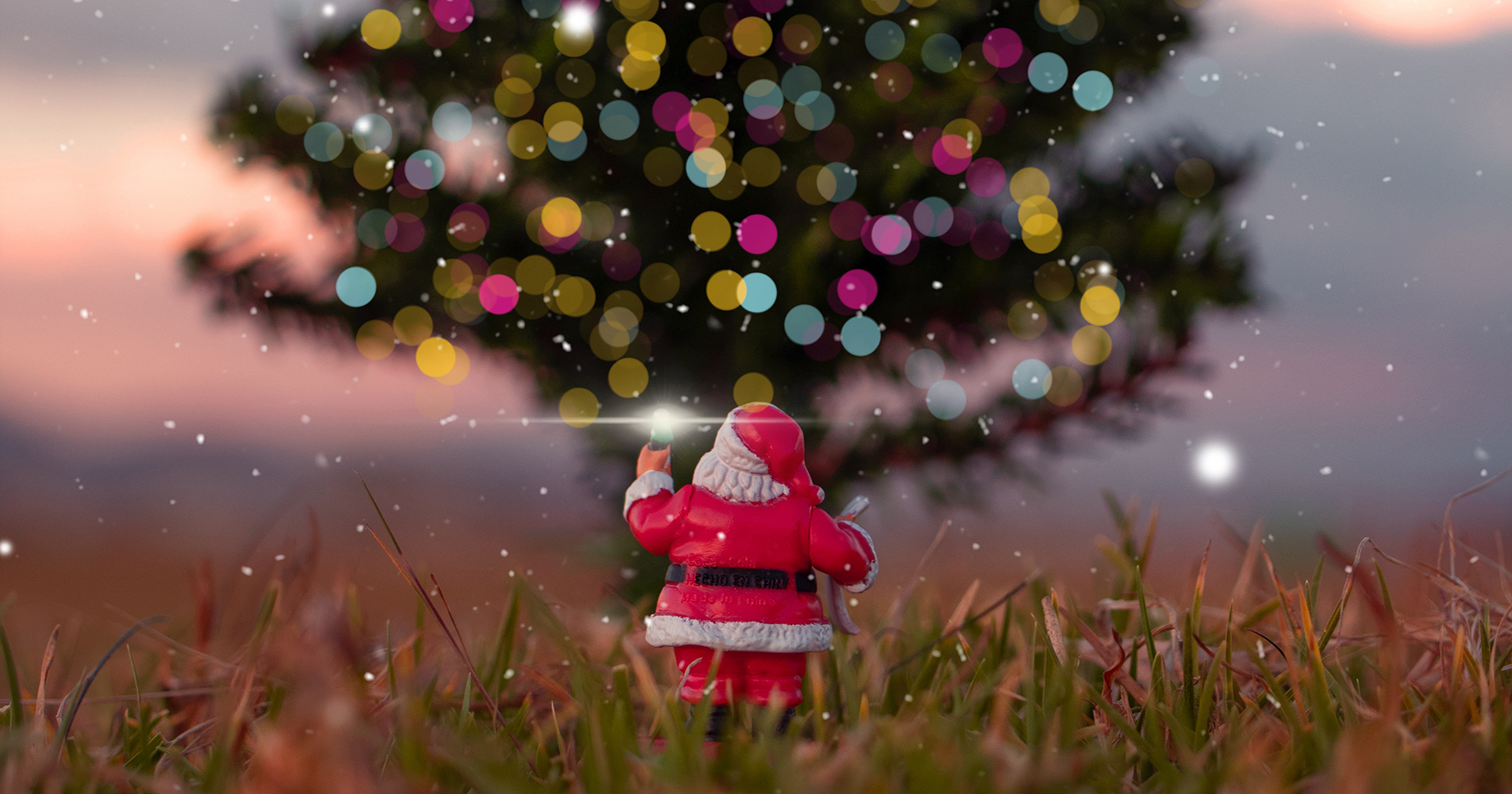Looking for a little lighthearted professional development this holiday season? Try out our Advent calendar for editors and writers and test your language knowledge.
Good times, gin and tonics, and gossip in the graveyard
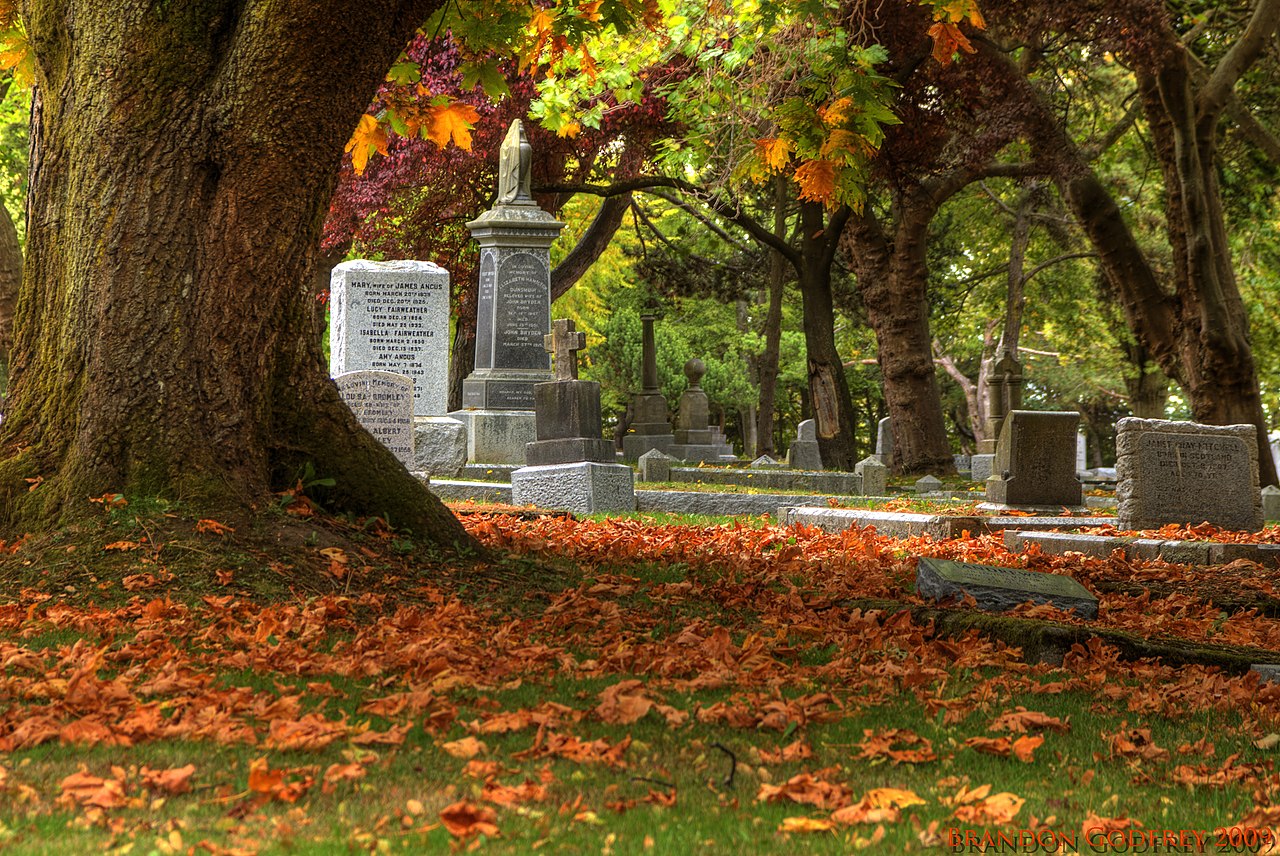
Last month, WCEA partners gathered for a long-overdue celebration of former partner Frances Peck’s retirement, delayed for more than two years by COVID-19.
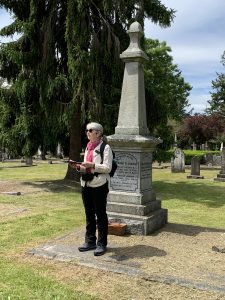
At Frances’s request, the festivities included a picnic, gin and tonics, and a tour of historic Ross Bay Cemetery in Victoria. Retired partner Yvonne Van Ruskenveld has been leading tours of Victoria’s cemeteries for more than 30 years on behalf of the Old Cemeteries Society of Victoria, which offers themed tours on everything from women’s history to murder and divorce. Our chosen tour was “Skeletons from Victoria’s Closets, a.k.a. Gossip in the Graveyard.”
We started at the grave of the first person to be interred at the cemetery, Mary Laetitia Pearse, who died on Christmas Day in 1872. The cemetery would not officially open for another three months, but Mary Pearse’s husband, Benjamin William Pearse, was chief commissioner of lands and works and may have had some influence over her final resting place. Benjamin Pearse is now buried in Ross Bay Cemetery as well, between Mary Pearse and Sarah Jane Pearse, who you may assume to have been Mary and Benjamin’s daughter. But no, says Yvonne—Benjamin is sandwiched for eternity between Mary and Sarah, his second wife.
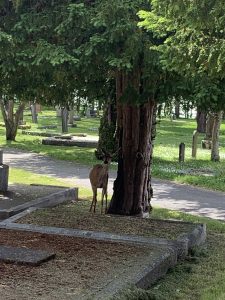
The gossip continued as we walked through the cemetery, visiting several graves associated with stories and scandals from Victoria’s past:
- Edward Ernest Wootton, lawyer for Amelia Collins, who died in 1922, leaving her sisters each $1. One of Amelia’s sisters contested the will on the grounds of a family history of insanity, though she assured the court that she was not afflicted herself.
- James Lawson Raymur, who refused to marry his long-time girlfriend, Jennie Wark, after she became pregnant, and denied even being involved with her. James was then sued by Jennie’s father—not for breach of promise but for loss of domestic services, as Jennie was not able to do housework while she was pregnant.
- Charles Good, who served as private secretary for Sir James Douglas and scandalously eloped with his daughter Alice. Unfortunately, the couple did not live happily ever after, and Alice eventually ended up in California, where she divorced Charles and remarried, becoming Baroness de Veiderhold (though some suspected the “baron” was bogus). Her father had the last word, though: “Had she trusted her Father more, and put less faith in Good, how different, and how much more happy, would her lot in life have been.” (Sir James Douglas, the first governor of BC and the second governor of Vancouver Island, is also buried at Ross Bay Cemetery.)
- Nellie Howard, the wife of John Howard, who came to Victoria via England and California, finding success in Victoria as an innkeeper. John had previously married Mary McCandlish in England but thought she had rejected him after he left for California, so John took up with Nellie instead. In the meantime, Mary had given up on John and remarried, but when that husband died, she tracked down John in Esquimalt, arriving on the scene as “John’s Other Wife.” Mary decided to reclaim her husband and Nellie eventually gave in, after insisting that John give her enough money to buy a boarding house. Mary had to work very hard as John’s wife, and she realized he was a bit of a complainer. Perhaps Nellie got the better deal after all.
Other notable names in the cemetery include Sir Matthew Baillie Begbie, BC’s first chief justice; William “Billy” Barker, a prospector who made the biggest strike of the Cariboo Gold Rush; and Amor de Cosmos, who founded the British Colonist, which later became the Times Colonist after a merger with the Victoria Daily Times. (Yvonne tells us the best stories of Victoria’s history are found in the newspapers, not the official records.)
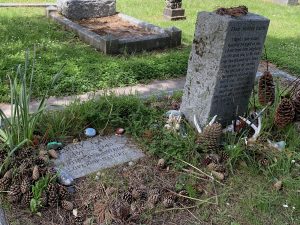
Another highlight of the tour was the gravesite of Emily Carr, an iconic Canadian artist who is equally well known locally for her writing. She died in 1945 and was buried in her family plot, but her grave was unmarked until 1963, when a plaque was placed by the Victoria Historical Society. Accompanying the plaque is a monument with the following inscription:
Dear Mother Earth!
I think I have always specially belonged to you. I have loved from babyhood to roll upon you, to lie with my face pressed right down on to you in my sorrows. I love the look of you and the smell of you and the feel of you. When I die I should like to be in you uncoffined, unshrouded, the petals of flowers against my flesh, and you covering me up.
Emily Carr
Both plaque and monument have been adorned with items left by visitors, including pine cones, painted rocks, small toys, a decorative bird, a pair of antlers (a recent addition, according to Yvonne), and pencils and paintbrushes arranged like bouquets.
After the tour we enjoyed a lovely picnic, complete with gin and tonics and some welcome but unexpected sunshine. Thanks to Yvonne for a wonderful tour, and all our best to Frances on her now-official retirement!

